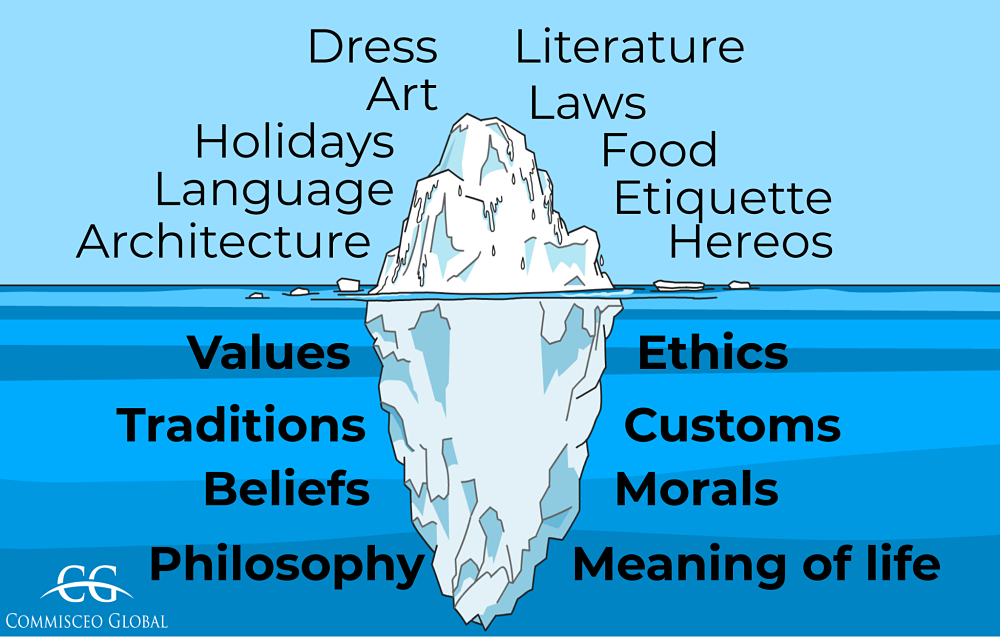Intercultural Training and the Iceberg Model
Many people ask, "What is culture?"
How can it be defined? What analogies can be used to describe it?
In intercultural training one of the questions that is often asked of participants is to think what culture means to them.
What picture can they draw to describe it?
Whether they draw a tree, cauldron, plate of food or a tapestry they are all valid as culture means different things to different people.
In essence what they are trying to describe is something that is made up of lots of things and is multifaceted.
An Analogy of Culture
Within intercultural training though there is one model or analogy of culture that most agree sums up the concept best; and that is the iceberg.
The iceberg perhaps lends itself best to this as it so graphically demonstrates the idea of having both a visible and invisible structure.
Furthermore, the fate of the Titanic, whose crew failed to appreciate the true size of the unseen part of the iceberg, adds another dimension in illustrating to people within intercultural training what can happen when this is ignored.

So why the Iceberg Model?
The iceberg as mentioned above has the visible tip. These are the areas of culture that we can see manifest in the physical sense. In addition, more often than not these are the elements that we come into contact with first when diving into a new country or culture.
Such "visible" elements include things such as music, dress, dance, architecture, language, food, gestures, greetings, behaviours, devotional practices, art and more.
In addition it can also relate to behaviours such as seeing people ignoring red traffic lights, spitting on the floor, smoking in public or queuing for a bus. All, depending on your own culture, may come across as weird, strange, rude, ignorant or simply silly.
None of the visible elements can ever make real sense without understanding the drivers behind them; and these are hidden on the bottom side of the iceberg, the invisible side. It is these invisible elements that are the underlying causes of what manifest on the visible side.
So, when thinking about culture, the bottom side of the iceberg will include things such as religious beliefs, worldviews, rules of relationships, approach to the family, motivations, tolerance for change, attitudes to rules, communication styles, modes of thinking, comfort with risk, the difference between public and private, gender differences and more.
So, for example, why do the English queue for everything?

This relates to their approach to fairness, justice, order and rights. The rationale behind the queue is that those that get there first should by rights be served first or get on the bus first. Many other cultures simply do not queue in this manner as it is not part of their cultural programming.
It is for the reasons of clarity that the iceberg model has become so popular. As one can see from the brief example above it perfectly demonstrates the idea of an unseen world manifesting in many different ways on the seen.
Read more about the iceberg model in our blog on the importance of cultural awareness.
Photo of ice cream van in London by Florencia Viadana on Unsplash
Related Posts
By accepting you will be accessing a service provided by a third-party external to https://www.commisceo-global.com/

 +44 0330 027 0207 or +1 (818) 532-6908
+44 0330 027 0207 or +1 (818) 532-6908
